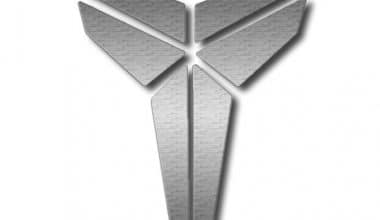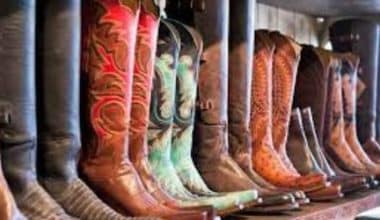Adidas is a multinational company that creates and produces footwear, apparel, and accessories. Germany is the country of origin and headquarters for this company. Adidas is well-liked by many people since they offer a wide range of products, including clothing, footwear, and collectibles for men and women. Adidas’s benefits and services include its ongoing work to improve the brand. This is done to keep its place in a competitive market by making the quality, appearance, and designs better to meet customer needs. People from all over the world wear and are familiar with Adidas. In this article, we’re going to discuss the history of the Adidas logo, its meaning, and the Adidas trefoil logo.
Adidas
A cobbler in a small German village is where it all began.
The company’s founder, Adolf Dassler, fought for the Germans in World War I and joined the Nazi party in World War II, which may cause some debate over Adidas’ beginnings.
Adolf “Adi” Dassler started creating athletic shoes in his mother’s bathroom in the early 1920s, shortly after the end of World War One. The Dassler Brothers Shoe Factory was established when his older brother Rudolf joined the company.
Adolf Dassler persuaded American sprinter Jesse Owens to wear his shoes during the 1936 Summer Olympics 1936. Dassler’s shoes were removed following Owen’s four gold medal victories.
Adolf changed the name of his business to Adidas in 1947 to honor his nickname “Adi.” He maintained ownership of the business until 1987 when he sold it to Bernard Tapie, a French investor. Tapie increased the production of Adidas shoes, but when he realized he couldn’t afford the interest on the loan he took out to purchase the business, he decided to sell it to Robert Louis-Dreyfus.
The sportswear business now provides uniforms for teams in the NBA, NFL, and collegiate levels. In 2020, Adidas made about $23 billion, which was less than the $27.9 billion it made in 2019.
History of the Adidas Logo
One of the most well-known shoe and clothing brands on the planet today is Adidas and the Adidas Logo. Recently, they’ve even started to compete with corporations, finding a method to draw in new customers at a time when many businesses in the sportswear sector are having financial difficulties. Like any other clothing company, Adidas has gotten a lot out of smart marketing and good design.
The three stripes of the Adidas logo have long been a source of fame. They weren’t the first business to employ the design, though. Karhu Sports was the initial owner of the trademark. Due to financial constraints, Karhu Sports, however, was severely impacted by World War II, and the owner decided to sell Adidas the trademark for their logo.
The three-stripe Adidas logo, known as the “trefoil,” was first introduced in 1971 in the shape of a leaf. The current emblem, which is shaped like a triangle, eventually took the place of this earlier design, while certain Adidas products still use the trefoil mark.
Who Designed the Adidas Logo?
Millions of customers strongly associate Adidas with the three stripes. It shouldn’t come as a surprise, since the company has used the same logo since 1949. The first Adidas logo was a running shoe with spikes that was hanging between the two long sides of the letter “d.”
However, it came out that Karhu Sports, a well-known shoe business, had previously been using the identical emblem. The trademark was bought by Adolf Dassler, the man behind Adidas, to settle the conflict for the price of two whiskey bottles and 1,600 euros today.
The Adidas logo had three parallel stripes by the early 1970s. Following the 1971 rebranding drive, the corporation unveiled a trefoil-based updated logo. The public first noticed a new logo in 1991: three stripes that were angled to resemble mountains. The Adidas logo as we know it now, which consists of a circle divided by three curved lines, was created in the early 2000s.
The Changes in the Adidas Logo
Over the past century, the company’s appearance and branding have undergone numerous changes. By the middle of the 20th century, Adidas had started to develop its logo and brand identity.
The popularity of sporting shoes was growing by 1924. Under the Dassler brand, the brothers were selling 200,000 pairs a year. The initial logo showed a bird holding a thin shoe inside of a shield.
After their relationship soured, the brothers broke up in 1947. Adolf registered Adidas, and Rudolf founded Ruda (later becoming Puma). Both children got acronyms made from the first and last letters of their names. For example, Adi was a nickname for Adolf.
The name Dassler was changed to Adolf Dassler in the Adidas logo’s initial revision in 1949. Spikes and the three stripes on the sports shoes add further detail.
Adolf Dassler bought the classic three-stripe logo from Finnish shoemaker Karhu Sports in the 1940s. Due to financial difficulties brought on by World War II, the owner sold it to Adolf for two whiskey bottles. Let’s talk about how and when the changes took place.
1971: The Adidas Trefoil Logo
The company’s logo was changed to the now-iconic trefoil in 1971 when it started producing clothes. The three football shapes that make up this trefoil emblem are placed so that the bottom is curved. The Adidas Originals line now uses a throwback to this 1970s design.
The three lines that the company was quickly coming to be recognized for were still present in the Adidas trefoil logo, which was created to highlight the variety of the products. The three leaves stand for the three continents where Adidas shoes are sold: North America, Europe, and Asia.
Adidas is no longer just for athletes. Major bands, including The Doors, The Sex Pistols, Bob Marley, and David Bowie, among others, wore this particular logo to help the company become a part of popular culture.
1991: The Mountain Logo
The logo for Performance items changed in the 1990s to another classic rendition of the line trio. So that you could see how they looked on the shoes, the stripes we looked at earlier were slightly angled and moved. The striking triad of stripes was used to make a mountain, which is the symbol for getting through a tough situation.
2002: Adidas NEO
In 2002, the stripes were restricted within a circle and appeared to be three separate trails leading into the distance or an animal scratch. Here, the stripes have a stylized appearance with narrower ends that sweep in a gentle arch toward the right. The logotype’s font is still the same, and the logo is now quite flat. This product line is now identified by this logo, Adidas Style.
2005: The Adidas Word-Mark Logo
The company’s wordmark logo is a classic homage to the three-stripe design that made the brand so simple to recognize. Even though the logo stays true to the overall style of the company, it is broad enough to represent everything about the brand.
The Meaning of the Adidas Logo
Adidas first introduced stripes to its running shoes to increase their durability. Jesse Owens, a runner, won the Olympics in 1933 while sporting Adidas footwear.
The three trefoil leaves represent the three regions of the world (North America, Europe, and Asia) where the company’s products are available, and the stripes on the trefoil emblem stand for the company’s emphasis on diversity.
The logo, which looks like a mountain, stands for the idea that you can overcome problems and reach your goals no matter what. Regarding the spherical emblem, it represents the world and quick change. Here is an interesting fact. All Adidas logos begin with a lowercase letter to show that the company creates casual apparel that is affordable for all customers.
Why Adidas has four Logos?
Adidas stands out because it never abandoned the earlier versions of its logos. The clothing company uses all four of them in different product lines and collections. Let’s discuss the logos:
#1. Тhree Parallel Stripes
It is a traditional sign that can be seen on all product lines. It wouldn’t be too much of an exaggeration to say that the three-stripe logo is the most important part of the Adidas brand.
#2. Trefoil
This style, along with the one with the three stripes, is used for the Originals line of casual shoes and clothes. The clothing company uses all four of them in different product lines, and inline, created for elite athletes, is the perfect suit for the mountain logo.
#3. Circle
This iteration appears in all of the Styathletes collections that were developed in conjunction with well-known fashion houses.
What are Adidas Logo Colors?
The Adidas logo’s official colors are white and black, and they always have been. There hasn’t always been a consistent approach to combining these hues, though. In certain iterations of the Adidas logo, the stripes were white against a black background; in others, the reverse was true.
Is the Adidas Logo a Triangle?
The triangle-shaped logo that many of us are most familiar with today is the “Mountain” emblem. When the company was looking for fresh approaches to modernize its brand identification at the end of the 1980s, the Adidas logo designer unveiled this concept.
Design Elements of the Adidas Logo
Adidas had already been adding the three bars to their products and marketing themselves as the “three-stripe brand” before they ever bought the trefoil logo from Karhu Sports. The three stripes on an Adidas shoe are designed to represent the three continents where the brand is most popular: North America, Europe, and Asia.
Adidas’s most recent logo redesign put the company’s famous three stripes into a triangular shape that looks like an inclining mountain. This added another layer of meaning to the logo. Adidas markets its clothes to athletes, and a common theme among them is getting through hard times. This mountain represents that idea.
Similarly, the Adidas emblem features the brand name written in lowercase letters. This option was selected to reflect the relaxed, unpretentious vibe of the Adidas brand.
In conclusion, the Adidas logo is not tied to any specific color palette, so the company can change the color of the logo as it sees appropriate to match the aesthetic of the clothing it is being used on.
The Popularity of the Adidas Logo
The success of a clothing label depends on how well its latest style sells. For the most important parts of a marketing strategy to work, their design needs to be both appealing to buyers’ eyes and easy to recognize.
Fortunately, the Adidas brand name and emblem are instantly recognizable. It’s a straightforward logo that hasn’t gone through many iterations and doesn’t rely on tiny, difficult-to-read types to be instantly recognizable.
Customers love the high quality of Adidas products, but the three stripes are still the most effective way for the company to market itself. The Adidas logo is on every piece of clothing they sell, making it the most important part of the design.
The best part is that Adidas has a meaning behind its logo. They know they’re getting a high-quality, performance-oriented piece of clothing when they buy an item of Adidas clothing or see someone else wearing one. Many repeat buyers attribute their loyalty to the brand’s long history with the sport.
Adidas Logo Trefoil
When Adidas diversified from just selling shoes and first started selling clothes in 1972, a new logo was adopted. The Trefoil was made by a small team made up of executives from Adidas and a few designers from a German design company. To keep Adidas reputation as the company with the three stripes, the new logo had three foils in the shape of leaves that were inspired by floral designs. The 3-stripes are constantly visible running through the leaves.
This Adidas logo has been used on footwear since 1976 and apparel since 1972. Since 2000, it has only been used on Originals products to honor the brand’s history.
What Does the Adidas Trefoil Logo Mean?
The primary brand mark of Adidas Originals is the trefoil. This logo stands for goods that are both icons of the present and the future. By the way, while the Performance and Sportswear logos are only found in black and white, the Trefoil is frequently seen in either that color or the recognizable Originals blue.
Where Did the Adidas Trefoil Come From?
When the trefoil was introduced in 1971, Adidas changed its logo. The old ones had pictures of shoes in them, but the trefoil replaced them. The three-stripe trademark was bought by the creator of Adidas, Adolf Dassler, in the 1940s from the Finnish footwear company Karhu.
Who Designed the Adidas Trefoil logo?
The effectiveness logo was created by creative director Peter Moore in 1990 and was first applied to the company’s equipment line of sporting goods. The three stripes are an exact replica of those found on early Adidas sports shoes, and they also resemble a mountain, which stands in for the difficulties that athletes must overcome.
What is Adidas Best Known for?
It is the second-largest sportswear producer in the world, behind Nike, and the biggest in Europe. It serves as the parent company for both the Austrian fitness technology company Runtastic and the Adidas Group, which owns an 8.33% share in the football team Bayern München.
Why Does Adidas Have 2 Different Logos?
Adidas has chosen to expand its existing logo rather than completely redesign it. The Adidas logo trefoil appears on Adidas Originals merchandise, while the mountain logo appears on tech and sports merchandise.
What Does the Adidas Logo Stand for?
The three leaves of the trefoil represent the three continents (North America, Europe, and Asia) where the company’s products can be bought. The horizontal stripes show that the company is committed to giving customers a lot of choices. The mountain shape in the logo stands for sticking with something even when it’s hard.
What is the Adidas Leaf Logo Called?
Adidas introduced its iconic three-stripe logo, stylized as a trefoil, in 1971. Although the trefoil design has been replaced with the current logo, which is triangular in shape, it may still be found on some Adidas products.
What is the Current Slogan for Adidas?
The 3-D printed sneakers produced by Adidas live up to the company’s slogan, “Impossible is Nothing.”
Why Did Adidas Change its Logo?
Adidas told investors in March 2021 about its “Own the Game” plan for 2025, which includes this change. The brand said that there was a gap in its lifestyle selection, with just the incredibly classic Adidas Originals and Adidas Sport available.
How Many Stripes Does Adidas Have?
Adidas has three stripes. The signature Adidas “three stripes” of three horizontal lines appear on the side of most Adidas products. Adolf Dassler, who started the company, called it “The Three-Stripe Corporation” because of its logo, which has three stripes.
Which is the Real Adidas Logo?
The official Adidas logo is a mountain. The branding on their website reflects this.
What is the Adidas symbol?
The Trefoil is the symbol for Adidas.
Who Invented Adidas 3 Stripes?
Adolf Dassler, the founder of Adidas, came up with the three-stripes logo. It was first used on shoes in 1949, the same year that Adidas was founded.
What is the Meaning Behind the Adidas Logo?
The three stripes in the Adidas logo are in the shape of a mountain, which stands for the challenges that people have to overcome.
What is the Difference Between Adidas and Adidas Original?
A division of Adidas devoted to lifestyle, fashion, and vintage items are called Adidas Originals. Numerous brand alliances with fashion designers, celebrities, and cultural icons are present there.
How Will You Know if Adidas is Original?
Do you want to know what to look for when purchasing a new pair of Adidas sneakers?
You can easily tell the difference between original and fake sneakers if you keep in mind all the features listed below!
#1. Check the Serial Number.
You need to peek inside your shoes to check whether they are authentic. Check the label tags on both pairs of shoes; if they differ between the right and left shoes, the shoes are authentic Adidas. If the inside serial numbers of the two shoes match, the pair in front of you is a complete fake. You should also verify the box’s number. Both the inside label tag and the box should have the same serial number.
#2. Check Adidas Logo
The logo is another significant aspect to consider. When you compare a fake and an authentic pair of sneakers, you’ll notice that fakes always include stickers on the tongue for the brand’s logo. The logo on a fake pair of shoes will fade considerably more quickly than the logo on an original pair.
#3. Matching Stitching Pattern
By looking at the stitch finish quality, you can determine whether the chosen pair of shoes is authentic or phony by looking at the stitch finish quality. Even the stitches on branded products are of great quality, but even the cheapest sneakers tend to have subpar stitching and unfinished seams. Fakes also frequently have a trailing end to their threads. The original Adidas shoes have strong, clean, smooth seams without any glue residue. Thus, if a new pair of sneakers has a sticky thread or a line that has crossed itself, it is unquestionably phony. If you notice any imperfections in the stitches, there is a fake in front of you.
#4. Consider Laces and Eyelets.
Original sneakers typically come with an additional set of laces that are tightly packed. If you have a pair of sneakers and the packaging doesn’t contain brand-new laces, your shoes are probably fake. However, many manufacturers of knockoffs have started to include a fresh set of laces. Because of this, this can’t be used as the primary indicator of authenticity. This does not, however, imply that you should disregard this functionality. Consider how the laces are packaged if you have them in the box because most fake producers don’t give the separate laces package much thought.
The material of the eyelets for laces is something else to consider. Only vintage Adidas shoes might feature metal eyelets. Metal eyelets are not present on any modern models at all.
#5. Check Barcode.
The phrase “Made in China” is no longer a guarantee of a duplicate. Adidas has increased its productivity since 1994 by moving almost all of its production to develop nations. Therefore, even in the original store, you cannot see the phrase “made in Germany” on sneakers, so do not be alarmed by this. No matter where the product comes from, the first three numbers of the barcode must be between 400 and 440.
#6. Color
A company’s website often doesn’t show the color of the shoes you picked out in an online store. It’s a fake! The model itself is often copied by people who make fake Adidas shoes, who then add more colors to the model. So, if you find some cute pink sneakers that you haven’t seen in the official store, don’t call them a new model just yet. It is best to check the website to see if the model of choice is offered in the color you have seen it in elsewhere.
#7. Price and Place.
Everyone would like to get a pair of high-quality shoes for a reasonable price, but sadly, this is not possible. Because they are made with materials of the highest caliber, name-brand shoes are not inexpensive. You should also be aware that only the official Adidas store, official website, or official representative’s website can sell original Adidas. Consider this and refrain from believing that you have gotten a wonderful deal because the price is significantly less than the price of the shoes shown on the official website.
I hope you now have a clearer idea of what original, premium Adidas shoes look like.
Is Adidas Made in Indonesia?
The company has expanded its sourcing operations to include accessories and equipment in addition to footwear and clothes from Indonesia. The Adidas Predator football footwear, among other revolutionary sports products, has been manufactured in Indonesia for the past 20 years.
Which is More Expensive Adidas or Nike?
Adidas comes in third, with Nike listed as the most valuable apparel brand at $32.4 billion. With a $32.4 billion valuation, Nike is still the most valuable apparel company in the world, according to Brand Finance.
How Do You Know if Your Clothes Are Adidas?
Each Adidas product has a number of tags on the side of the collar that provide an ID as well as information on the size and material.
Why is Adidas the Best Brand?
It not only sells its customers high-quality shoes but also ones that are cozy and long-lasting. It is well known that they design their products with their customers in mind. They even divided their product lines into categories with customers’ wants and sports fans in mind.
Why is Adidas Successful?
After American athlete Jesse Owens wore Adidas sneakers at the 1936 Olympics and won four gold medals, the brand gained widespread recognition around the world. Meanwhile, in 1954, the German football team, wearing Adidas shoes, won the World Cup final. Due in large part to these two sporting events, Adidas became a household name.
What is Adida’s Most Popular Product?
The most popular Adidas product is the Adidas sports shoes
An estimated 6.56 million people wore Adidas sports shoes in 2020, making them the company’s best-selling item.
The Weakness of Adidas
Adidas has some flaws that they need to fix in order to grow and keep the market from getting stale.
#1. Lack of a supply chain
Most of Adidas’s products are made by independent or third-party manufacturers, most of which are in China, Cambodia, and Vietnam. Because of this, Adidas now runs the risk of becoming too reliant on foreign suppliers.
#2. High-Priced Goods
Adidas excludes low-income clients by charging a premium or high price for its products.
#3. Low Volume of Products
Only the Adidas and Reebok brands are included in the Adidas Group’s portfolio, which places restrictions on the group’s access to sportswear, accessories, and apparel.
#4. Increasing Operational Costs
Along with the cost of labor and raw materials going up, Adidas’ operating costs have also been going up. Although Adidas’ revenue has been increasing, so too have its operating costs.
Solutions to the Weaknesses
Here are some solutions to the weaknesses of Adidas:
- The business must put an emphasis on cost control in addition to increasing consumer engagement.
- For long-term growth and better results, the organization needs to get deeper into the Asian markets.
- Adidas should therefore limit how much of its work it sends out and make more of its products in-house to avoid problems with negotiations and possibly high manufacturing costs.
Who is the Target market for Adidas?
Adidas is aiming to win over both new and long-time customers by catering to the growing health and fitness sports market. They are intended for athletes or young people between the ages of 20 and 30 who enjoy sports. Adidas believes that athletes between the ages of 13 and 18 are the most crucial customer group because they represent the brand’s future athletes. However, the business is also well known among people in the 40 to 65 age group. Adidas products are often more expensive than other brands because of their high-end quality, strong brand awareness, and strong brand recognition.
Because of this, they primarily serve high-end and upper-middle-class customers. Thanks to cell phones, Adidas Originals’ target market has recently learned about a number of new lifestyle products. This has helped the business by bringing in more customers. Adidas also serves a smaller group of customers who are between the ages of 15 and 25 and do not engage in athletics but purchase footwear or clothing as a statement piece of fashion. Adidas can’t appeal to every customer in such a vast and diverse market because if they do, their message will be muddled and they won’t be able to satisfy any of them.
Conclusion
The Adidas logo, which was updated in 2022, first appeared in 1990. The present Adidas logo, which is strong in form and incorporates the Three Stripes and the Adidas text, is meant to evoke a mountain.
The Adidas wording from the previous logo has been removed from the new Adidas logo, which was used through 2022. Beginning in late 2022, it was applied to all Adidas Performance items.
This implies the importance of the Adidas logo on its products. The logo is a marketing strategy for them.
Related Articles
- ADIDAS AFFILIATE PROGRAM: 2023 Review, Commission & Detailed Guide
- PUMA LOGO: Meaning, Shoes, and What It Represents
- SKATE SHOE BRANDS: List of the Best Skate shoe Brands in 2023 (Updated)
- BEST GOLF BRANDS IN THE WORLD: (Best-rated prices)
- Per Stirpes: Definition, Comparison, Distribution, and Beneficiary Methods.






